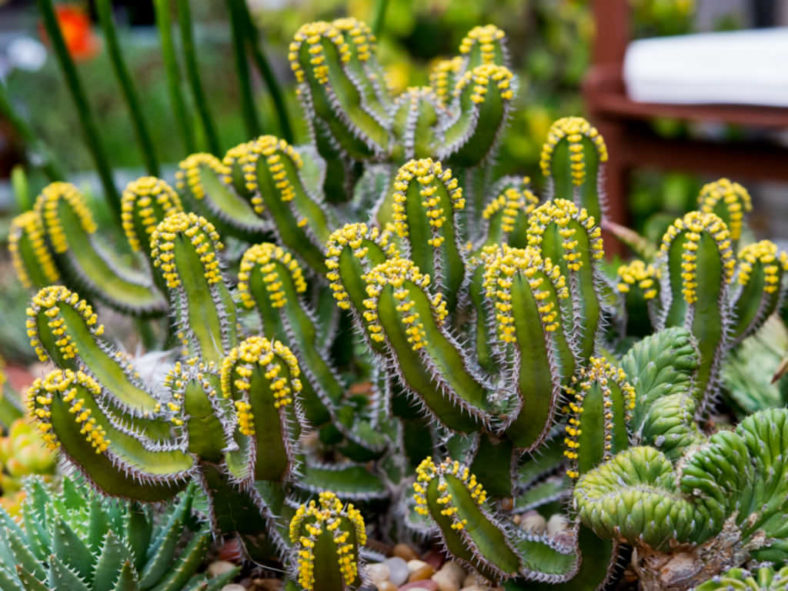Euphorbias, commonly known as Spurge, are easy-to-grow plants. They can be houseplants or part of your garden. Euphorbias range from tiny annual plants to large and long-lived trees. The genus has over 2,000 members, making it one of the largest genera of flowering plants. The succulent species originate mainly from Africa, the Americas, and Madagascar.
Seed Propagation
Euphorbias can be grown from seed, but germination can be difficult. Sow seeds in a mix of equal parts of coarse sand and commercial seed growing mix in spring. Under cold conditions, germination takes 2 to 6 months, but with warmth, it can occur in 1 to 2 weeks.
Stem Cuttings
Propagation of Euphorbias from cuttings is the easiest and quickest method for many species and is also a way to prune an old plant back into shape. The cuttings should be taken with a clean, sharp knife. Branching species should be cut, if possible, at the branching point. Solitary plants such as Euphorbia bupleurifolia or Euphorbia piscidermis can be decapitated to encourage the production of side shoots, which can later be removed and rooted.

The best time to take cuttings is in the spring when growth starts, but summer is also suitable. Cuttings taken in the fall or winter have little time to root, so they should only be considered an emergency measure to rescue plants suffering from root rot.
The latex appearing after cutting must be washed away in a glass of water or by spraying. Coldwater stems from the flow quickly, as does brief exposure to a candle flame or match.
Euphorbias with large leaves should have leaves just above the cut removed with a knife. The cut surface should be left to dry before planting, one or better several days for leafless species. Leafy Madagascan species require only a short period of dryness. Dusting the cut surface with a hormone-rooting powder will help roots form. The planting medium can be the same as for seed sowing.
Rooting can take longer than expected, but is accelerated by raising the soil temperature to around 77 °F (25 °C) using a thermostatically controlled warming mat. Direct sun should be avoided. If unrooted cuttings dehydrate, they can sometimes be saved by soaking them in water at room temperature until they swell up again and can be replanted.
Some Euphorbia species that can be rooted from side shoots continue to grow as branches and do not form the typical plant form. The Medusoid Euphorbias are in this group, as well as Euphorbia brevitorta, Euphorbia groenewaldii, Euphorbia tortirama, and others. For these, the so-called two-step cutting method is required.
Leaf Cuttings
Some Madagascan Euphorbias (Euphorbia francoisii, Euphorbia cylindrifolia, Euphorbia pachypodioides, Euphorbia ankarensis, Euphorbia millotii) have been successfully propagated from leaf cuttings. Leaves are gently pulled from the plants (not cut) and placed into cubes of rock wool, which are then set on coarse sand in a tray. The surface of the sand should be covered with water (putting the leaves directly into damp sand also works, although with greater losses). Hormone rooting powder and fungicide assist the process. Both gentle heat and a cool position with a plastic cover to increase humidity should produce the desired result. After 40 days, the plants are sufficiently well-developed to be potted.
Source: euphorbia-international.org
Links
- Back to genus Euphorbia
- Succupedia: Browse succulents by Scientific Name, Common Name, Genus, Family, USDA Hardiness Zone, Origin, or cacti by Genus